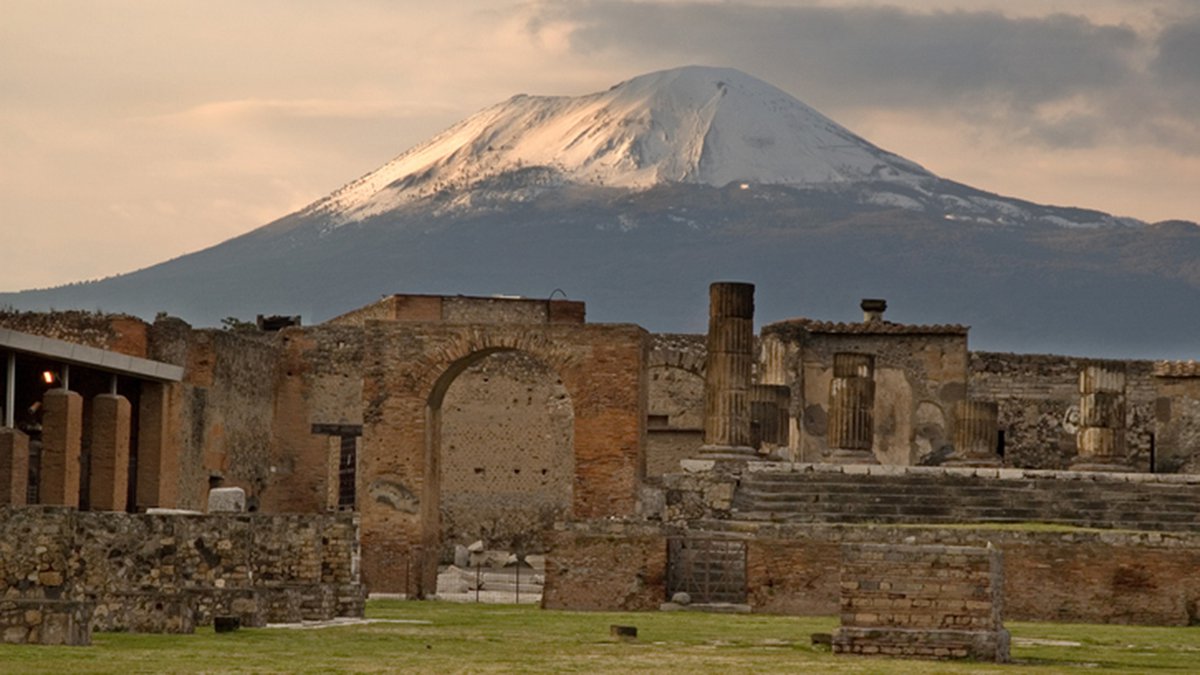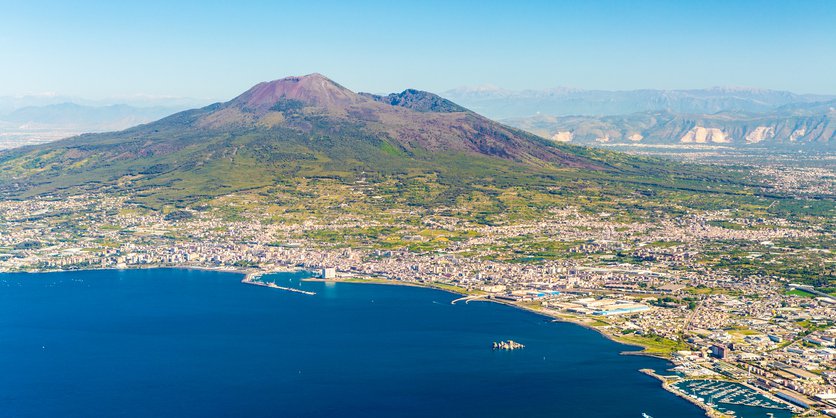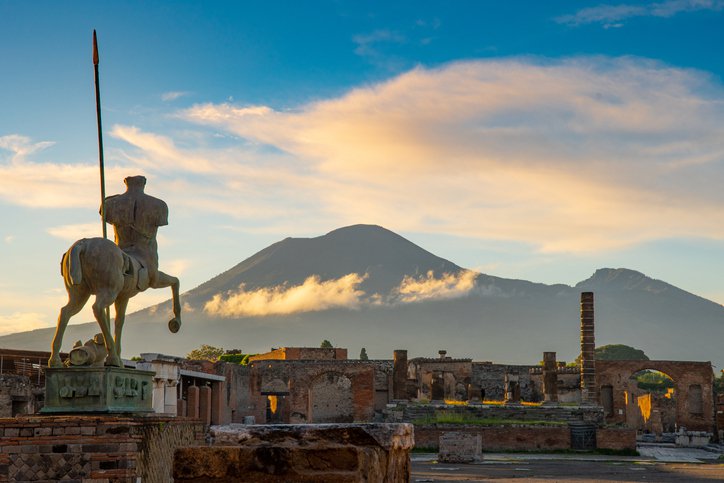Volcano: Mount Vesuvius
The eruption of Mt. Vesuvius in 79 AD is one of the most well-known volcanic eruptions in history. The violent eruption came with little warning, ejecting monumental amounts of ash, mud and rocks into the air and onto the Roman cities of Pompeii and Herculaneum.
Vesuvius sits on the west coast of Italy near Naples and is the only active volcano on mainland Europe. As part of the Campanian volcanic arc, it formed over the subduction zone created by the collision of the Eurasian and African tectonic plates. This subduction zone stretches the length of the Italian peninsula and is the source of other volcanoes, such as Mt. Etna and Stromboli.


Vesuvius began its life in the caldera of an ancient volcano called Mt. Somma. Mt. Somma collapsed 17,000 years ago in its final eruption, forming the caldera. Vesuvius began to grow in the caldera during the collapse. Parts of Mt. Somma can still be seen on the north and northeast sides of Vesuvius.
Vesuvius has erupted at least three dozen times since 79 AD. Even though Vesuvius is currently quiet, it is still an active volcano. Its history of violent eruptions indicate that it could be a danger to the more than two million people who live in its vicinity.
To underscore the inherent danger of living alongside this volcano, Vesuvius has had eight major eruptions in the last 17,000 years. In 1631, Vesuvius entered a period of steady volcanic activity that included lava flows and numerous eruptions. Explosive eruptions occurred in the 1700’s, 1800’s, and early 1900’s, creating more lava flows and fissures that damaged or destroyed towns around the volcano. The most recent eruption was in 1944 during World War II, disrupting air travel for the Allied troops and causing the evacuation of a nearby base.

Why has Vesuvius erupted so violently in the past? Part of it has to do with the magmatic source for the volcano. As the African tectonic plate is pushed under the Eurasian plate, a portion of the lower plate has detached from the upper part, creating what is known as a “slab window.” This promotes melting of a different type of rock underneath Vesuvius than what is around it, and this winds up favoring violent eruptions. This rock is known as andesite, a volcanic rock that has around 50-60% silica content. This relatively high amount of silica creates “sticky” magma that traps gases and water to create explosive eruptions, making Vesuvius especially dangerous and unpredictable.
An interesting factoid – when Vesuvius erupted in 79 AD, Pliny the Younger, the son of a Roman diplomat, was in Misenum across the Bay of Naples from Vesuvius. He described the eruption in a letter to the Roman historian Tacitus, and the letter is recognized as the first detailed account of a volcanic eruption. He described an ash cloud shaped like an umbrella pine that rose high in the sky turning day into night. Today, scientists call explosive volcanic eruptions that produce large clouds of rock, ash and gases “Plinian” eruptions!
Love volcanoes? Learn more about volcanoes' awesome power of creation in Volcanoes: The Fires of Creation now showing in the Dome.
Credit: All images via Getty Images